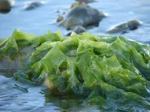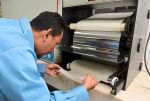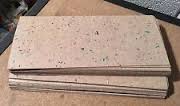 In response to budget concerns throughout Missouri, and in alignment with our goal to reduce our impact on the environment, the University of Missouri Press has decided to switch from industry-standard paper to seaweed and algae-based paper in our book production.
In response to budget concerns throughout Missouri, and in alignment with our goal to reduce our impact on the environment, the University of Missouri Press has decided to switch from industry-standard paper to seaweed and algae-based paper in our book production.
Seaweed absorbs far larger quantities of carbon dioxide than land plants, and the process  by which pulp is produced is more environmentally friendly than the process of making wood pulp. This paper not only cuts down on the use of new wood fibers, it uses algae taken from the Lake of the Ozarks as part of an environmental cleanup and protection program.
by which pulp is produced is more environmentally friendly than the process of making wood pulp. This paper not only cuts down on the use of new wood fibers, it uses algae taken from the Lake of the Ozarks as part of an environmental cleanup and protection program.
 The seaweed paper’s colors range from a speckled light gray to subtle sea shades of purple, the texture and coloring varying, depending on the season and the location where the algae is gathered. It does have a faint fishy smell, but this will be an advantage for certain books, such as Lisle Rose’s Power at Sea series: descriptions of the Navy crossing the Atlantic during WWI will be particularly vivid.
The seaweed paper’s colors range from a speckled light gray to subtle sea shades of purple, the texture and coloring varying, depending on the season and the location where the algae is gathered. It does have a faint fishy smell, but this will be an advantage for certain books, such as Lisle Rose’s Power at Sea series: descriptions of the Navy crossing the Atlantic during WWI will be particularly vivid.
Another advantage to seaweed paper, when used with soy ink, is that it is edible, although some books will be more easily digested than others.


This is an April Fools story, right?
LikeLike
🙂
LikeLike